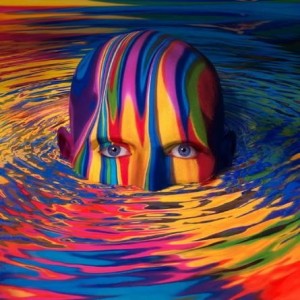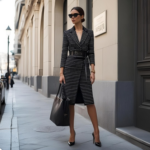Colors are visual phenomena. The only way to recognize colors is by viewing and cannot be heard or felt.
Colors are meant as non verbal communication and conveys more than imagination.
When getting to the design process, it is a central entity.
They also have the ability to change the appearance of a person viewed.
It is the primary element noticed about any design and influences the perseverance of the garment worn.
Color is the initial point in a design process. The most common factor in determining what color a person wears is mainly Gender and Personality.
Men generally dress up with various shades of dark colors as blue, black, green, gray, red, and brown.
Women usually dress up with lighter colors such as pink, yellow, cyan, lime green, orange, and peach.
They also wear dark colors normally used by men, but the males so not use lighter colors which are women related.
Colors impact
- Your apparent shape
- Your apparent weight
- Your apparent personality
- Your emotions
Eleven basic colors have universal fundamental psychological properties regardless of shades or tones of usage.
Each has the ability to project it both in positive or negative effects which depend on the relationships within color combinations.
Colors have the tendency to warm up, cool down, making practical or not, create impact or carefree.
Colors also influence the hormones, blood pressure and body temperature of the viewer, which was fixed by medical science.
As said earlier, each color has its own positive and negative effects when mixed with lighter or darker shades.
Colors create an intense effect on one’s mood and their energy level.
The psychological properties of the eleven basic colors are as follows:
- RED-Physical
- Positive: Physical courage, strength, warmth, energy, basic survival, stimulation, masculinity, excitement.
- Negative: Demanding, aggression, strain.
- BLUE- Intellectual
- Positive: Intelligence, communication, trust, efficiency, modern, duty, logic, coolness, reflection, calm.
- Negative: Coldness, reserve, lack of emotion, unfriendly.
- YELLOW- Emotional
- Positive: Optimism, confidence, self-esteem, emotional strength, friendliness, creativity.
- Negative: Irrationality, fear, depression, Immaturity, anxiety, suicide
- GREEN- Balance
- Positive: Harmony, balance, refreshment, universal love, rest, renewal, reassurance, environmental awareness, peace symmetry.
- Negative: Boredom, heavy, stagnant, blandness.
- VIOLET- Spiritual
- Positive: Spiritual awareness, containment, vision, luxury, authenticity, truth, quality.
- Negative: Introversion, decadent, suppression, inferior.
- PINK-
- Positive: Physical tranquillity, nurture, warmth, femininity, love, sexuality, survival of the species.
- Negative: Inhibition, emasculation, physical weakness.
- GREY-
- Positive: Neutral
- Negative: Lack of confidence, dampness, depression, lack of energy.
- BLACK-
- Positive: Sophisticated, glamour, secure, emotional safety, efficiency.
- Negative: Domination, coldness, menacing, heavy, cruelty
- WHITE-
- Positive: Hygiene, sterility, clarity, purity, cleanness, simplicity, sophistication, efficiency.
- Negative: Sterile, elitist, coldness, barriers, unfriendliness.
- BROWN-
- Positive: Serious, warmth, Nature, earthiness, reliable, support.
- Negative: humourless, heavy, lack of sophistication.
Be Colour Crazy
Be colour conscious right down to your toes. Sometimes you only need to change the colour to make it work! It will pay dividends. Our fashion colour choices say a lot about the image we are trying to portray and how we feel about ourselves. Care must be taken with the basic colour of the garments if unusual colour accessories are to be worn to advantage. Check the colour of the fabric against your face. Hair, eyes, and skin colouring must be taken into account, plus the occasion for day or evening wear. Generally, the smaller and the thinner person, the lighter the colour she should wear, with the reverse for taller, heavier types. The right colours can make your skin tone appear more even, reduce the appearance of wrinkles and dark circles and make you look brighter and healthier. While on the other hand wearing a colour which isn’t so good for you can make you look tired, dull and even ill. Create your own colour story without restricting yourself to just two or three basic colours. Choose colours which flatter and enhance you, not colours you have to work hard to wear to look alive. Only through experience will you become selective about colours and tones which compliment or do nothing for you.





